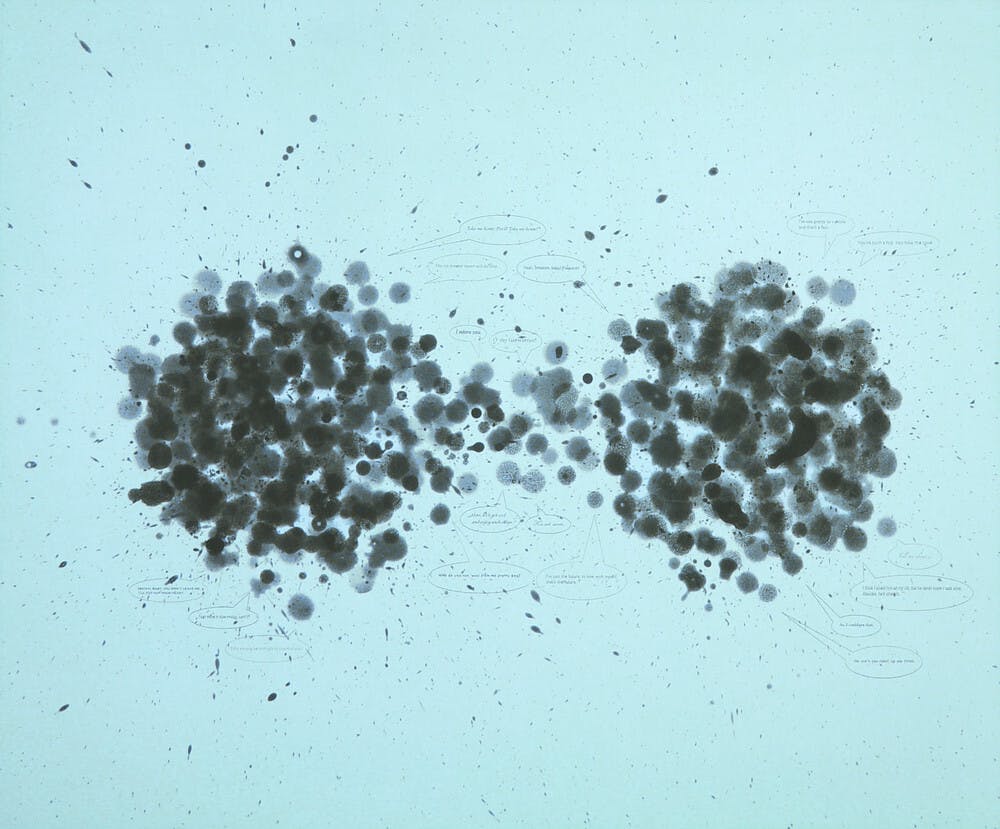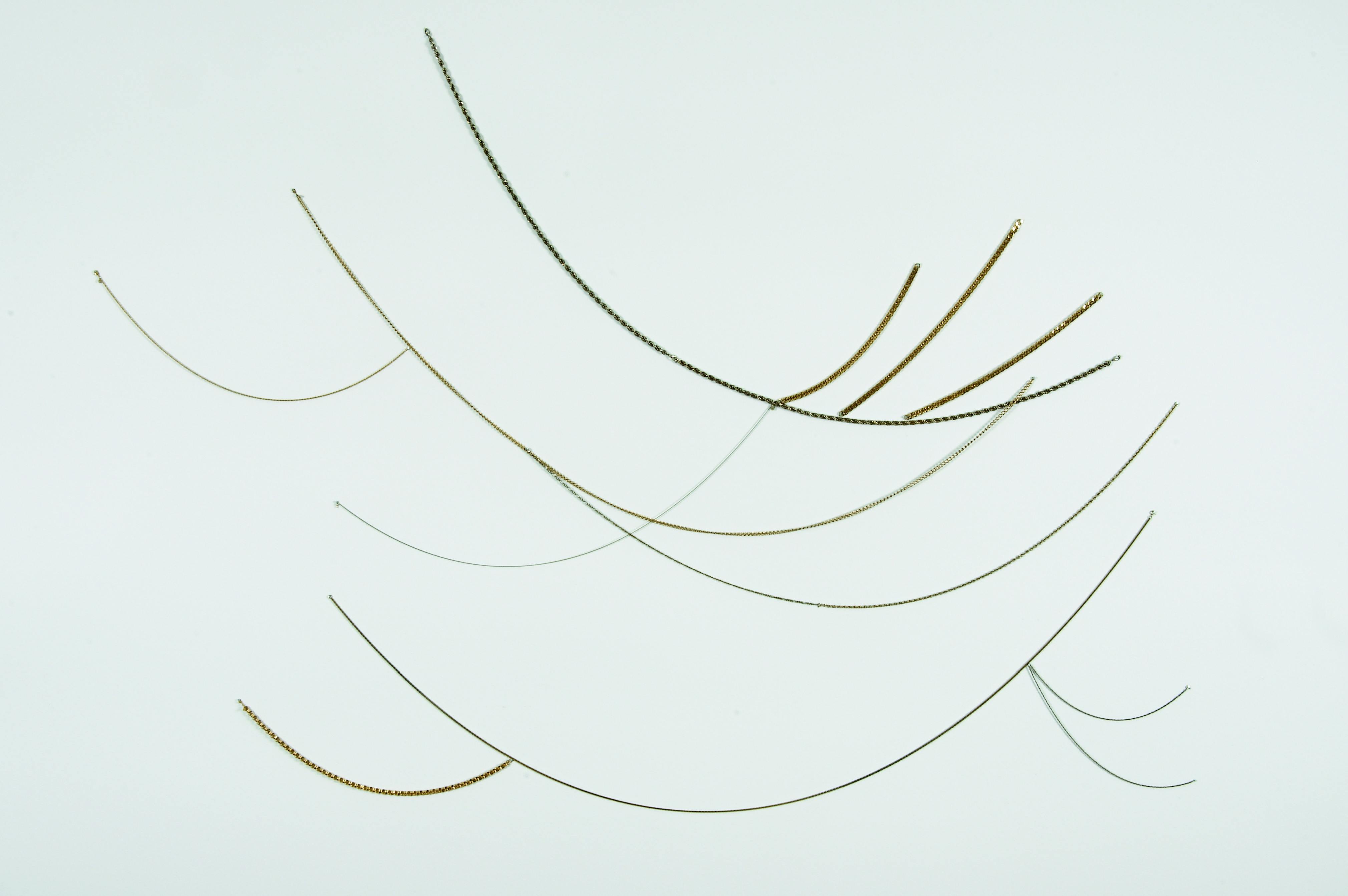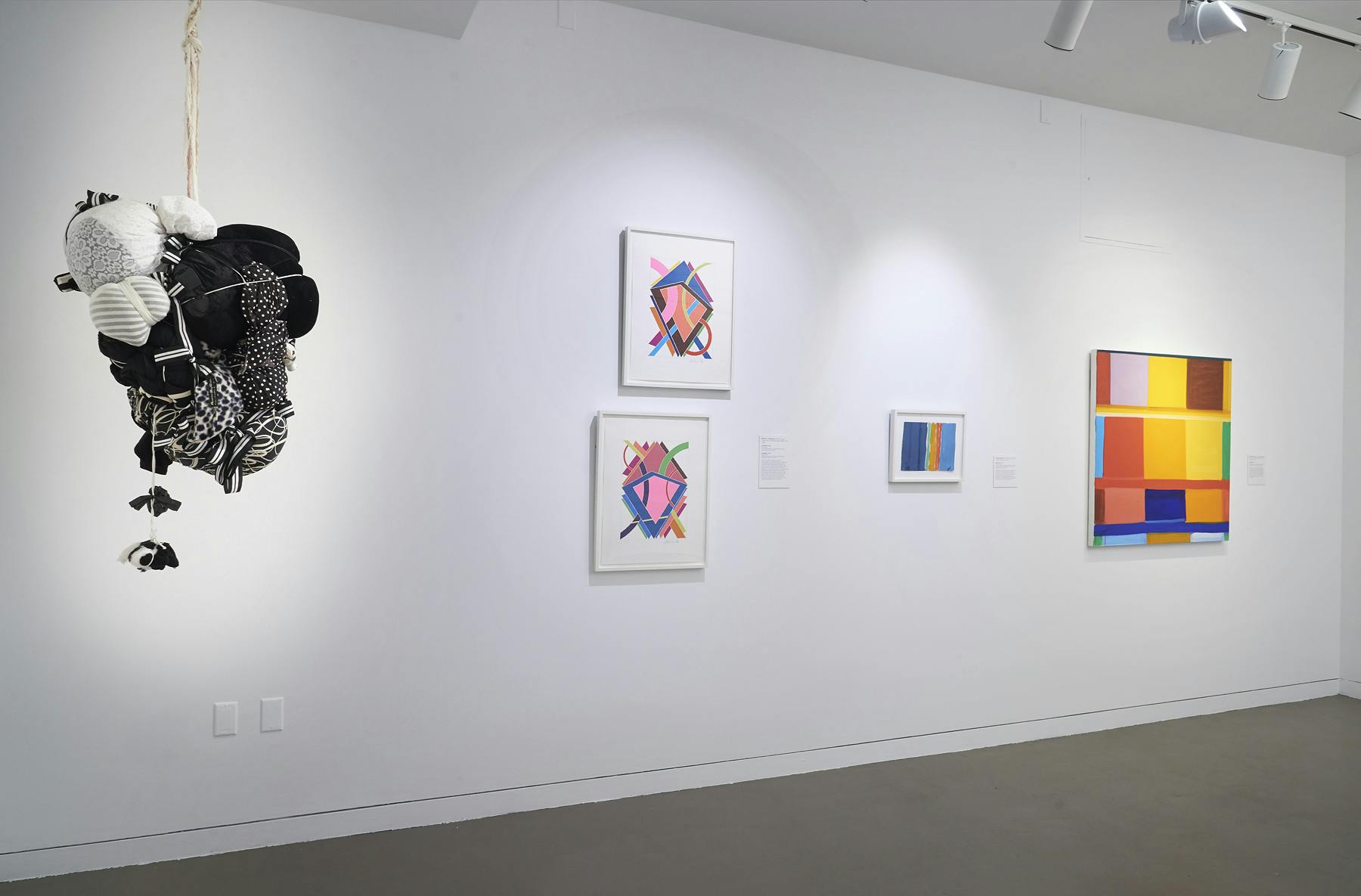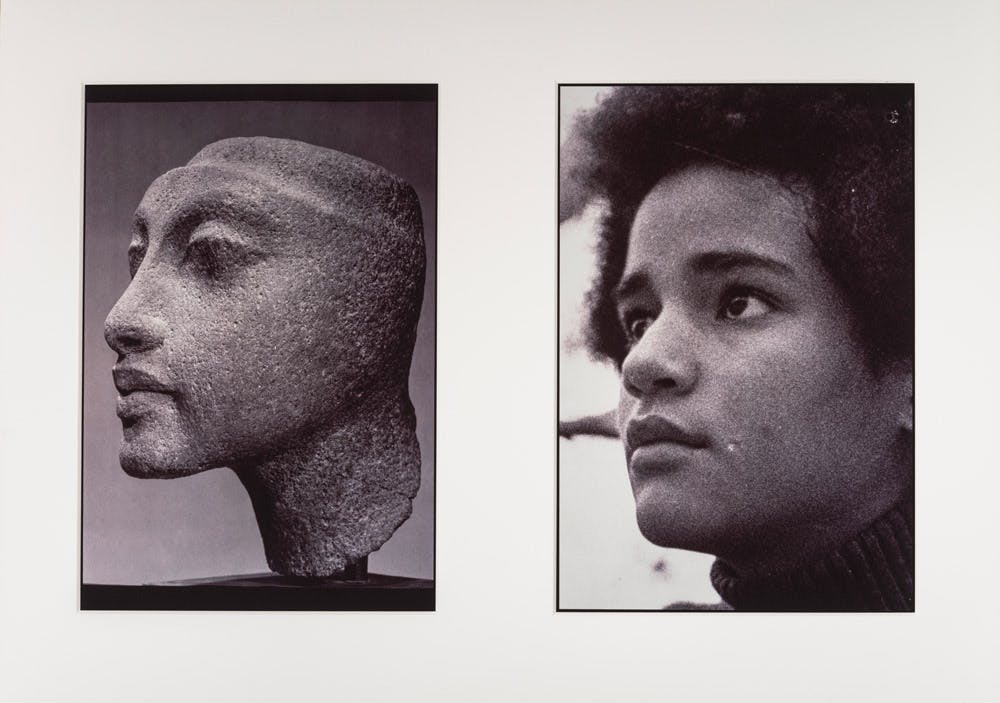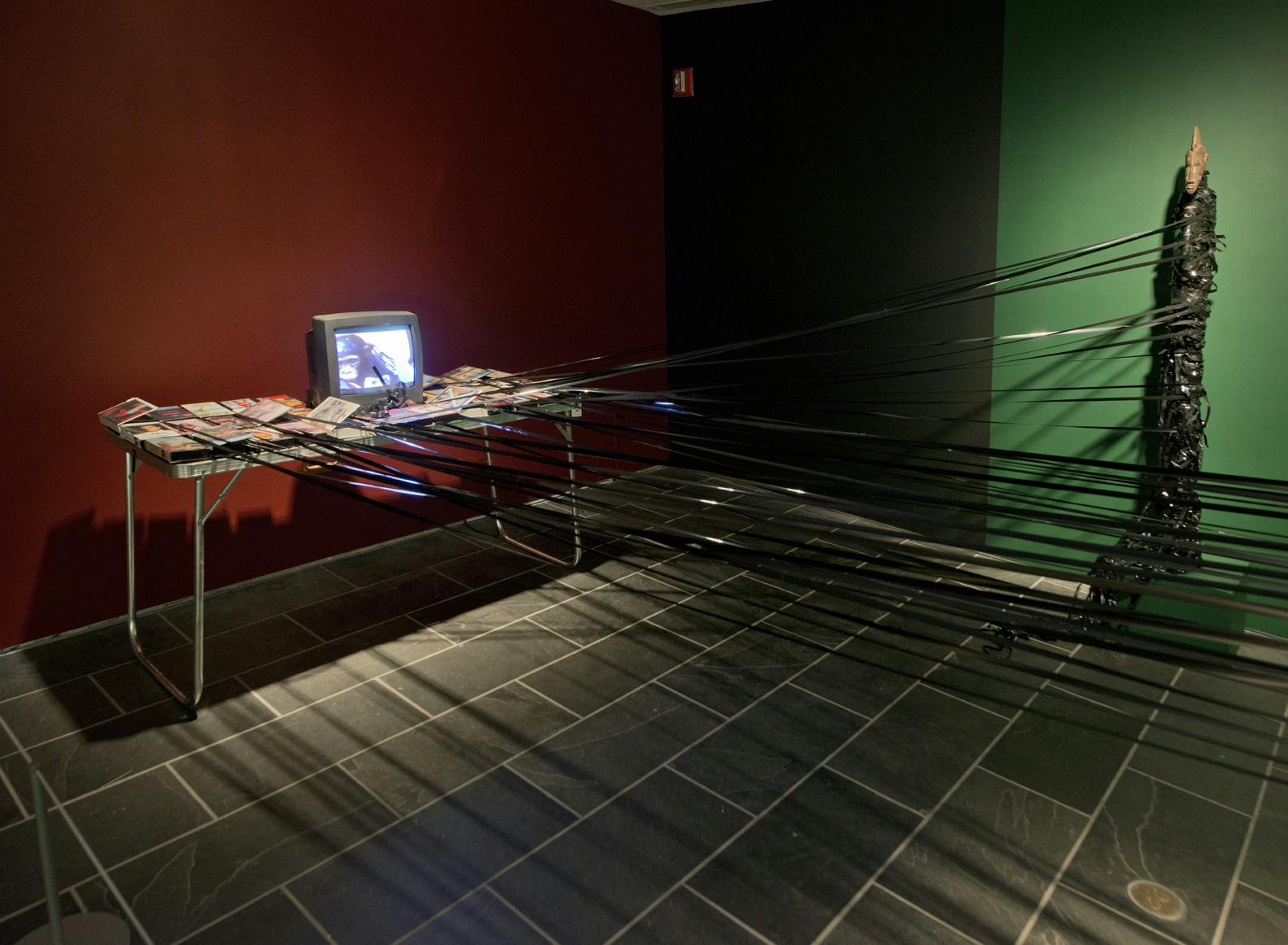Fred Wilson
(b. 1954)Spanning several media, including installation, sculpture, photography, and printmaking, Fred Wilson's practice challenges assumptions of culture, history, and race.
Biography
Wilson initially zeroed in on the relationship between objects and museums, exploring how categorization, collecting rationales, and display tactics illustrate the ideologies and relationships of power imbedded in institutions.
In his formative project Mining the Museum: An Installation by Fred Wilson (1992–93) at the Maryland Historical Society in collaboration with The Contemporary in Baltimore, Wilson installed hundreds of museum objects in confrontational juxtapositions, such as polished repoussé silverware next to a rusty pair of slave shackles. The installation highlighted both Maryland’s history of racial violence and the Historical Society’s selective omission of that history. The artist has continued to explore these ideas through more object-based work.
Born in the Bronx, Fred Wilson obtained a BFA from State University of New York at Purchase in 1976. Before establishing himself as a practicing artist, Wilson worked as a freelance educator at The Metropolitan Museum of Art, American Museum of Natural History, and the American Craft Museum (now Museum of Arts and Design), and also served as the first director of the Longwood Arts Project in the Bronx.
Wilson has been represented at institutions and in biennials around the world, including Southeastern Center for Contemporary Art, Winston-Salem, North Carolina; Whitney Museum of American Art, New York; Center for Art Design and Visual Culture at the University of Maryland, Baltimore; and the 50th Venice Biennale. Among his many accolades include a John D. and Catherine T. MacArthur Foundation “genius” grant (1999).
The artist has been featured in a number of exhibitions at the Studio Museum in Harlem, including two solo shows. The Museum’s permanent collection includes works that extend across three decades of his career.
Exhibitions and Events
Fred Wilson
(b. 1954)Spanning several media, including installation, sculpture, photography, and printmaking, Fred Wilson's practice challenges assumptions of culture, history, and race.
Biography
Wilson initially zeroed in on the relationship between objects and museums, exploring how categorization, collecting rationales, and display tactics illustrate the ideologies and relationships of power imbedded in institutions.
In his formative project Mining the Museum: An Installation by Fred Wilson (1992–93) at the Maryland Historical Society in collaboration with The Contemporary in Baltimore, Wilson installed hundreds of museum objects in confrontational juxtapositions, such as polished repoussé silverware next to a rusty pair of slave shackles. The installation highlighted both Maryland’s history of racial violence and the Historical Society’s selective omission of that history. The artist has continued to explore these ideas through more object-based work.
Born in the Bronx, Fred Wilson obtained a BFA from State University of New York at Purchase in 1976. Before establishing himself as a practicing artist, Wilson worked as a freelance educator at The Metropolitan Museum of Art, American Museum of Natural History, and the American Craft Museum (now Museum of Arts and Design), and also served as the first director of the Longwood Arts Project in the Bronx.
Wilson has been represented at institutions and in biennials around the world, including Southeastern Center for Contemporary Art, Winston-Salem, North Carolina; Whitney Museum of American Art, New York; Center for Art Design and Visual Culture at the University of Maryland, Baltimore; and the 50th Venice Biennale. Among his many accolades include a John D. and Catherine T. MacArthur Foundation “genius” grant (1999).
The artist has been featured in a number of exhibitions at the Studio Museum in Harlem, including two solo shows. The Museum’s permanent collection includes works that extend across three decades of his career.


